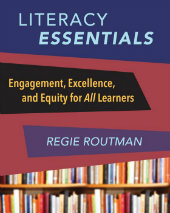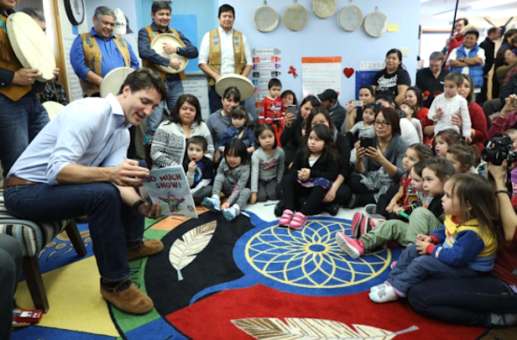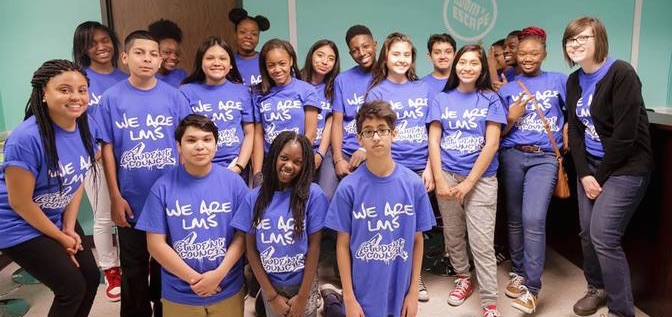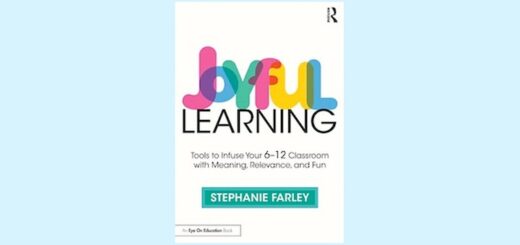Want Classroom Equity? Seek and Value Diversity

I’ve never heard anyone say they hold low expectations for students, but, in fact, that is the actuality in many schools, especially high-poverty, underperforming ones.
In my forty-plus years of teaching, mentoring, and coaching, it is low expectations on the part of adults in schools that most impede optimal student learning.
Students in high-poverty schools are typically two or more years below grade level, despite caring teachers who believe they are doing all they can. Our diminished expectations often lead to a watered-down curriculum, low-level language use, skills taught in isolation, and scripted programs that isolate students from potentially rich and authentic literacy and language experiences.
Minority and low-performing students are more likely to be placed in ability groups and have the “least effective teachers.” They are also less likely to take and be prepared for AP classes and AP exams and to graduate prepared for higher education.
Nothing changes until teachers, principals, and superintendents come to believe their students can do better, and they embrace the moral obligation to ensure that teaching and assessing lead to increased student learning—for all.

Several years ago, I spent a day in a school where 80 percent of the students qualified for free and reduced-cost meals, and almost all were English language learners. Achievement at the school had been dismal for years.
The talented principal, who was bilingual and bicultural, had grown up in this community, was one of the few in her high school to attend and graduate from college, and had returned with a steadfast commitment to increase possibilities for her underserved Hispanic students.
After proudly giving me a tour around the school, where teaching and learning were now vibrant in every classroom, she was eager for me to meet the superintendent and assistant superintendent. In our conversation with them, I asked, “How many of the students in your district go on to college?” Without missing a beat, they answered, “Our students don’t go on to college.”
Neither administrator could cite any numbers because they collected no such data; they simply didn’t believe or expect that their students could be college material. Although their words were shocking and heartbreaking, such low expectations are not uncommon.
In far too many schools, we accept stagnant or low achievement and play a blame game. We use poverty and other outside factors to shirk our responsibility and maintain our low expectations, and we fail to acknowledge that we can do better.
Although it is true that we cannot compensate for the myriad of complex issues many of our students come to school with, we can and must give them our finest efforts for the hours they are with us each day. We need to raise our expectations for what’s possible, see our students as capable and resilient, and assume responsibility for the achievement of all students.
Equity means we provide all students equal access to an excellent education—that is, we ensure they receive what they need and desire to reach their full potential. That includes fairness and decency toward all, as well as a challenging and relevant curriculum. With higher expectations and excellent, targeted teaching, we can raise achievement and change lives.
Seek and Value Diversity
An important first step in moving toward equity for all children is to seek and value diversity as an asset and a necessity for a flourishing learning culture in and out of school. When my husband, Frank, and I made the decision to live and work in Shaker Heights, Ohio, in the 1970s, a prime motivation was that the schools were racially and economically integrated. Our son, Peter, who went from kindergarten through grade twelve in the local public schools, maintained “best friends” status with four classmates throughout his life, three of whom were African American.
Ethnic diversity is like fresh air: It benefits everybody who experiences it. By disrupting conformity it produces a public good. To step back from the goal of diverse classrooms would deprive all students, regardless of their racial or ethnic background, the opportunity to benefit from the improved cognitive performance that diversity promotes. — Sheen S. Levine and David Stark, “Diversity Makes You Brighter,” The New York Times, 12/9/15, Op-Ed.
Not to be minimized is research that shows “a racially integrated student body is necessary to obtain cross-racial understanding, which may lead to a reduction of harmful stereotypes and bias.”
Another important, related point: desegregating by class, rather than race, is often seen as an easier political sell and first step toward more equality. A strong body of research supports the fact that all children, but especially poor children, benefit socially and academically when they are in classrooms with middle-class and affluent students. However, although more schools are making efforts to ensure affluent and less-advantaged children go to school together, “…in U.S. schools 92 percent of students remain in racially and socioeconomically homogenous schools.”
In spite of the research that diversity—racial and socioeconomic—is viewed by most as a necessity for educational equity, it still remains rare in many of our schools. Recent federal data indicate that “the number of high–poverty schools serving primarily black and brown students more than doubled between 2001 and 2014” and that majority-black and Hispanic schools “were less likely to offer a full range of math and science courses than other schools,” denying equal access to the more academically rigorous courses students have in other schools.

In Seattle, where I live and where my granddaughters attend public schools, approximately one-third of the city’s white students attend elite private schools while one-third of the city’s students of color attend a high-poverty school. As well, almost half of all African American and Latino students in the city do not graduate in four years, if at all. Very distressing, these dismal numbers have held constant for decades, according to several friends who have been longtime residents.
Despite supposed “best” efforts, there has been little change for our students most in need. As the principal of Seattle’s Garfield High School noted, “Dismantling a system built to sort students will take more than good intentions.” Seattle, Detroit, Philadelphia, Chicago, Dallas, Newark, Boston, Los Angeles, New York, and other urban hubs continue to struggle with resolve, results, resources, and responsibilities despite consensus that our schools need dramatic improvement. At our own local levels, we must do better—in spite of poverty and other factors we cannot control.
How Can We Take Action?
Value different life and language experiences. Diversity is growing in our communities and in our schools. We need more role models like Justin Trudeau, Canada’s prime minister, who has taken a leading international role in celebrating multiculturalism in schools and championing why we must all work toward a diverse, open, and inclusive education system.
See diversity as a plus. Embrace the backgrounds, languages, traditions, and cultures that students bring with them. Use a world map to pinpoint where our families originated. Consider making schoolwide announcements in different languages. Embrace music and art from around the world. Read aloud books that celebrate students’ unique cultures. Our students will follow our lead in accepting and celebrating newcomers, all students, and their families.
Promote cross-racial friendships and dialogue. Recent research shows that teacher behaviors “may shape how students select and maintain friends and affect the longevity of interracial friendships.” Most children still form most of their friendships in school, so we need to do all we can to create deliberate access for diverse friendships to form—through mixed grouping, conversations, invitations, language use, opportunities to work and play together, and ensuring that all children feel good about who they are.
Students in diverse classrooms who experience cross-cultural dialogue demonstrate increased civic engagement, are more likely to be open to alternative points of view, are less likely to stereotype “others,” and are better prepared for working in our increasingly diverse, global economy.
Examine classroom and school libraries for diversity. Excellent literature with accurate and dignified portrayals of people of color is still in short supply. With students, determine if the classroom collection is balanced by gender, students’ cultures, interests, fiction and nonfiction, and more. Check for gender and racial stereotypes.

Strive to adopt a mindset that views all students as capable. Research suggests teachers often view students from low-income families as less able than their peers from higher-income families even when cognitive assessments return equivalent scores. When we perceive students as being less skilled and teach accordingly, we deny them the high-level, challenging instruction we offer students from higher-income families. We have to consciously work to change that harmful dynamic.
Group students who might not usually work together. My middle school granddaughter considers being expected to work with different groups of students as one of the most valuable strategies her “best” teachers employ.
Come to agreement on shared beliefs on how to promote diversity. Until individual and schoolwide beliefs shift to valuing diversity as a strength, many students will remain underserved. (See pages 113–118 of Literacy Essentials for developing beliefs.)
Question policies that keep schools segregated, and work to change them. The academic achievement gap for poor, black, and Latino children increases when they spend time in segregated schools. Even when poor and middle-class students or students of color do attend schools with whites and affluent students, a two-tiered system often exists. There may be unspoken rules and settings that restrict participation and access to only whites or blacks at the school.
Find out what’s going on in your school and district, share findings, write an editorial, and use social media to advocate for more inclusive policies—for example, promoting integration by considering socioeconomic status when assigning students to schools.
Evaluate the representation of minority students in various school contexts. We must face and adjust our biased behaviors, which limit equity. Seek out students who have potential but need an extra push to succeed. Ensure that being a bilingual student or a student of color is not used as an excuse for exclusion from a gifted program. Grissom and Redding (2016) reported that “Black students are three times more likely to be referred for a gifted education program if they have a black teacher.”
As well, examine the school’s discipline policy and actions for fairness to all. High-poverty schools with large populations of blacks and Hispanics are “more likely to use expulsion and suspension as disciplinary tools,” according to a 2016 Washington Post article.
Which practices promote equity?
This quick list summarizes practices discussed in my 2018 book Literacy Essentials that have been shown to be effective in promoting equity.
- Highly knowledgeable, experienced teachers
- Valuing and validating students’ and families’ stories and culture
- Shared writing and shared reading
- Scaffolded conversations
- More face-to-face time with teacher, less technology
- Small-group work
- Emphasis on oral language and vocabulary
- Asking high-level questions
- Optimal Learning Model (OLM)—responsive teaching in action, differentiation, whole-part-whole teaching
- Hearing all the voices—lots of opportunities for conversations
- Not giving the “right answer”—expecting students to figure it out
- Seeing failure as a learning tool
- Extensive libraries—diverse collections with easy access
- Choice within structure
- Schedules that promote integration and large blocks of uninterrupted time
- Interventionist working in classroom; students not removed
- Reading aloud literature that reflects students’ cultures
- More student choice
- Respectful language
- Flexible grouping (heterogeneous, cross-racial, short term)
- Cutting back on tracking; at least in ninth grade, doing away with honors English and history
- Bilingual and dual-language programs
- Ensuring physical and psychological safety
- Adequate funding
- First-class resources
This post was adapted with permission from Literacy Essentials, “Equity 1: Making High Expectations an Instructional Reality.” Please refer to the book’s Notes section for citations and the source of quotations not noted here.
______________________________________________

Here at MiddleWeb, Literacy Essentials has been reviewed an unprecedented four times by our contributors. Check out reviews by teacher and curriculum leader Sarah Cooper, literacy coach Pam Hamilton, improvement specialist Deana Jones, and principal Rita Platt.
































